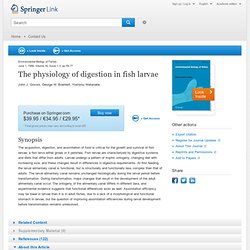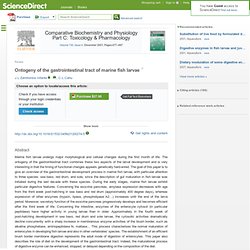

Biomimetic dyes as affinity chromatography tools in enzyme purification 10.1016/S0021-9673(00)00577-X : Journal of Chromatography A. Detection of Helicobacter pylori in Stool Specimens by PCR and Antigen Enzyme Immunoassay. CDP-6-deoxy-delta 3,4-glucoseen reductase from Yersinia pseudotuberculosis: enzyme purification and characterization of the cloned gene. The 3,6-dideoxyhexoses, usually confined to the cell wall lipopolysaccharide of gram-negative bacteria, are essential to serological specificity and are formed via a complex biosynthetic pathway beginning with CDP-D-hexoses.

In particular, the biosynthesis of CDP-ascarylose, one of the naturally occurring 3,6-dideoxyhexoses, consists of five enzymatic steps, with CDP-6-deoxy-delta 3,4-glucoseen reductase (E3) participating as the key enzyme in this catalysis. This enzyme has been previously purified from Yersinia pseudotuberculosis by an unusual procedure (protocol I) including a trypsin digestion step (O. Han, V.P. Miller, and H. -W. Biomimetic-dye affinity adsorbents for enzyme purification: Application to the one-step purification of Candida boidinii formate dehydrogenase - Labrou - 2004 - Biotechnology and Bioengineering. Purification Protocols. Industrial Biotechnology.
Www.jbc.org/content/88/1/295.full.pdf. Lipids, Volume 10, Number 10. Evaluation of the nutritive value of Leucaena leucocephala leaf meal, inoculated with fish intestinal bacteria Bacillus subtilis and Bacillus circulans in formulated diets for rohu, Labeo rohita (Hamilton) fingerlings - Bairagi - 2004 - Aquaculture Resear. Environmental Biology of Fishes, Volume 16, Numbers 1-3. The acquisition, digestion, and assimilation of food is critical for the growth and survival of fish larvae; a fish larva either grows or it perishes.

Fish larvae are characterized by digestive systems and diets that differ from adults. Larvae undergo a pattern of trophic ontogeny, changing diet with increasing size, and these changes result in differences in digestive requirements. At first feeding, the larval alimentary canal is functional, but is structurally and functionally less complex than that of adults. The larval alimentary canal remains unchanged histologically during the larval period before transformation.
During transformation, major changes that result in the development of the adult alimentary canal occur. Production of amylase by the intestinal microflora in cultured freshwater fish - Sugita - 2003 - Letters in Applied Microbiology. Proteolytic enzymes in fish development and the importance of dietary enzymes 10.1016/0044-8486(84)90298-9 : Aquaculture. Aquaculture International, Volume 10, Number 2. Isolationand enumeration of aerobic bacterial flora in the gastrointestinal tract of nineculturable freshwater teleosts, namely catla, rohu, mrigal, silver carp, grasscarp, common carp, tilapia, walking catfish and murrel have been carried out.Amylolytic, cellulolytic, lipolytic and proteolytic microflora were identifiedfrom the culture plate using selective media.

The isolates were qualitativelyscreened on the basis of their extracellular enzyme producing ability. Theselected strains were further quantitatively assayed for amylase, cellulase,lipase and protease activities. Protease activity was exhibited by almost allthe bacterial isolates, while strains isolated from tilapia, grass carp andcommon carp showed considerable amylolytic and cellulolytic activities. Maximumactivity of lipase was exhibited by a strain isolated from silver carp.
Ontogeny of the gastrointestinal tract of marine fish larvae 10.1016/S1532-0456(01)00274-5 : Comparative Biochemistry and Physiology Part C: Toxicology & Pharmacology. Abstract Marine fish larvae undergo major morphological and cellular changes during the first month of life.

The ontogeny of the gastrointestinal tract combines these two aspects of the larval development and is very interesting in that the timing of functional changes appears genetically hard-wired. The goal of this paper is to give an overview of the gastrointestinal development process in marine fish larvae, with particular attention to three species: sea bass; red drum; and sole, since the description of gut maturation in fish larvae was initiated during the last decade with these species. During the early stages, marine fish larvae exhibit particular digestive features. Concerning the exocrine pancreas, amylase expression decreases with age from the third week post-hatching in sea bass and red drum (approximately 400 degree days), whereas expression of other enzymes (trypsin, lipase, phospholipase A2…) increases until the end of the larva period.
Distribution of intestinal enzyme activities along the intestinal tract of cultured Nile tilapia, Oreochromis niloticus L. 10.1016/S0044-8486(99)00270-7 : Aquaculture. Abstract Regional distribution of intestinal enzymes in Nile tilapia was investigated using enzyme histochemistry.

Samples from adult fish were obtained from the five major intestinal segments. Activities of maltase, leucine aminopeptidase, dipeptidyl aminopeptidase IV, lipase, non-specific esterases, and alkaline phosphatase were examined in each segment. All enzymes were present at specific sites along the first four intestinal segments. Strong reaction for maltase was present in the third intestinal segment, while aminopeptidases and alkaline phosphatase were detected in the first three parts.